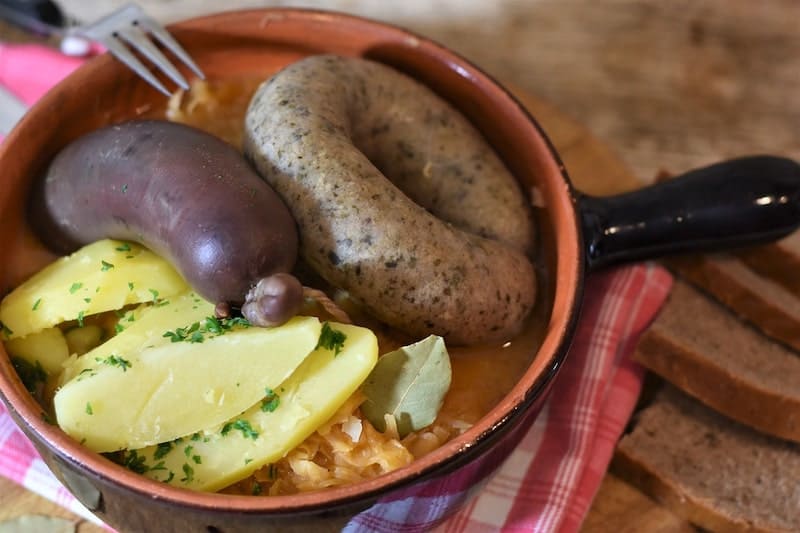What Is Boudin Casing Made Of? (Solved!)
Like other sausages, the Louisianan boudin’s tasty goodness is packed into a casing, then tied or twisted into individual links.
What makes boudin different from the next sausage is that it can be enjoyed with or without the casing. Many prefer not to eat the casing, which may be why some believe the casing is not edible. However, this isn’t true.
So, what is boudin casing made of? It’s made of natural pork casing that is perfectly safe to eat.
This article gets into the details of boudin casing and its process before being filled with boudin.
What Is Boudin Casing Made Out Of?
Boudin casing is made from the sub-mucosa of the pig’s small intestine.
This layer of the intestine consists primarily of naturally occurring collagen.
How Is Boudin Casing Prepared?
The casing treatment starts at the butchery, where “green” (uncleaned) runners or ungraded casings are removed from the pig during its slaughter.
It’s then cleaned, which entails using a machine to break the inner mucosa and flush it out.
The cleaning method can also be done manually, but the casings are generally machine cleaned.
They’re vigorously flushed with cold water to remove the blood from the mucosa.
If all the blood is not removed correctly from the casing at this point, this can cause stains leading to pink casings.
The clean runners are then tied in bundles and preserved in plastic drums filled with saturated salt brine.
They’re then sold to companies to complete the casing process.
Can You Eat the Casing on Boudin?
Boudin casing is natural and perfectly edible.
The skin can be tough to chew when it’s reheated via boiling, steaming, or placed in a microwave oven.
However, when it’s oven-baked, grilled, or air-fried, the result is a crispy and extra flavorful boudin.
How to Make Boudin Casing Crispy
Next are some guidelines to achieve crispy boudin skin when reheating it:
Oven-Baked Boudin
- Preheat your oven to approximately 300° Fahrenheit.
- Lightly oil a baking sheet, then place your boudin on it.
- Bake slowly for 25-30 minutes until the casing is golden brown and an instant-read thermometer reads 160° Fahrenheit.
- Allow it to cool down for a few minutes before serving with some whole grain mustard sauce.
Grilled Boudin
- Preheat your outdoor grill for medium to high heat, and lightly grease the grate using butter or oil.
- Place your boudin onto the grate and allow it to cook for 5 minutes. Then turn it over to cook evenly on the other side. Cook until the internal temperature reaches 160 degrees Fahrenheit.
- Allow to cool before serving.
Air-Fried Boudin
- Using a sharp knife, poke through the casing of your boudin in three places.
- Then spread out the links in the air fryer.
- To prevent the boudin from sticking, spray some oil on the basket if necessary.
- Set the air fryer to 400° Fahrenheit and allow your boudin to cook until golden brown.
How Do You Remove Boudin Casing?
Fresh boudin can be squeezed out of its casing by simply slicing or biting one end of the link to create a hole for the boudin to go through.
However, if the boudin is frozen, you can remove the casing once it’s parboiled.
Here’s how:
- Simmer the boudin in hot water for 2-3 minutes.
- Remove the boudin from the water, then rinse in cold water to prevent it from cooking further.
- Use a paper towel to dry the sausages.
- Then use a knife to put a shallow cut through the length of the link.
- Gradually peel back the casing.
- Continue to cook the skinless sausages if required.
In Summary
Many people choose not to eat boudin casing as they find it tough to chew, and there are specific dishes where the casing is discarded altogether.
This may make some wonder what boudin casing is made of and whether or not it’s okay to eat.
Boudin skin is made from the pig’s intestine, so it is entirely safe to eat.
However, when it’s reheated in the oven, grill, or air-fryer, the skin becomes crispy, and the boudin flavors intensify, taking the experience of eating boudin skin to a whole new level.







